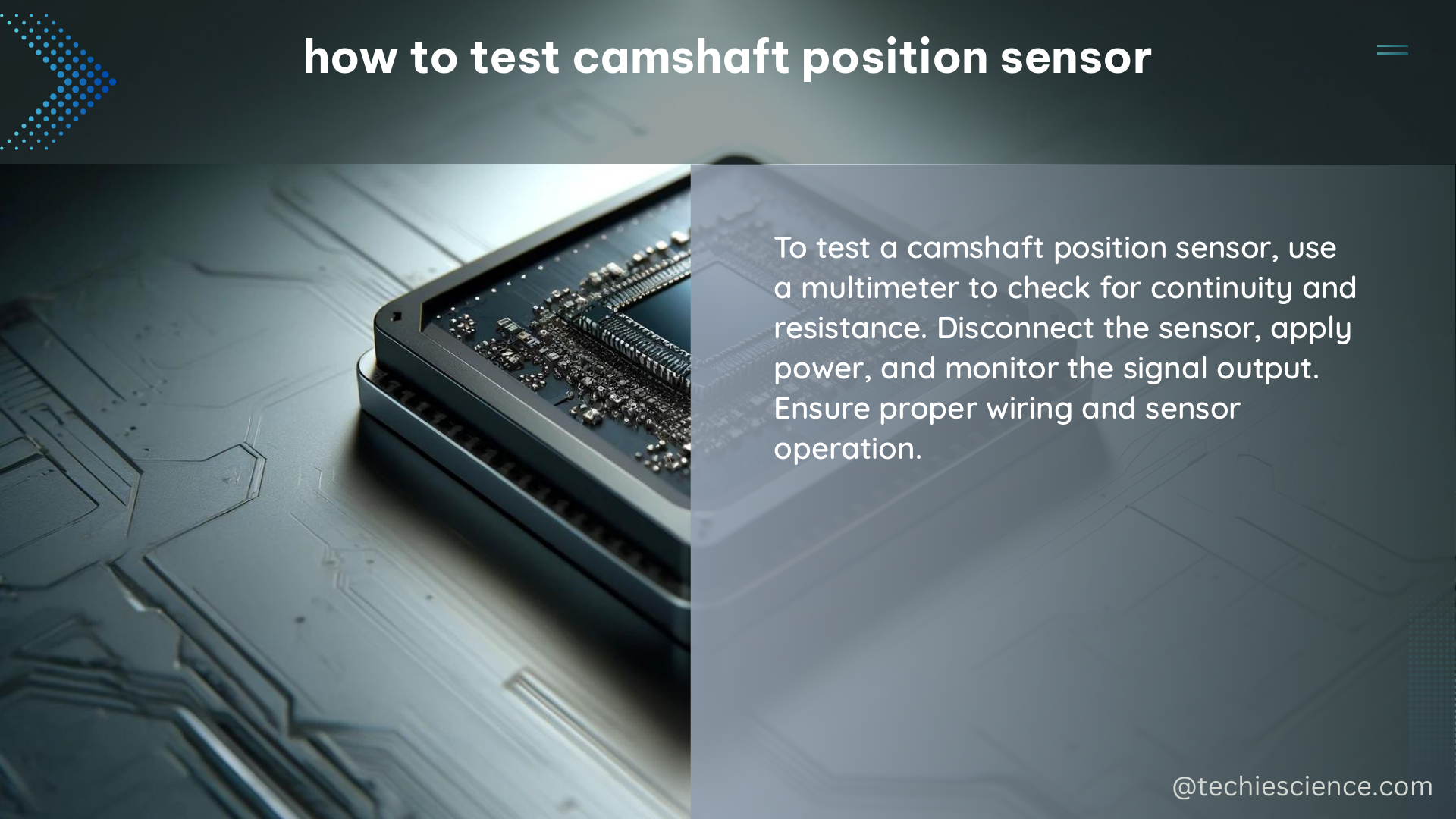Diagnosing and testing a camshaft position sensor (CPS) is a crucial step in troubleshooting engine performance issues. The CPS is responsible for providing the engine control unit (ECU) with information about the position and timing of the camshaft, which is essential for proper engine operation. In this comprehensive guide, we’ll walk you through the step-by-step process of testing a camshaft position sensor to ensure it’s functioning correctly.
Symptoms of a Bad Camshaft Position Sensor
Before diving into the testing process, it’s important to understand the common symptoms of a malfunctioning camshaft position sensor. These include:
- Check Engine Light (CEL) illumination or flashing
- Trouble codes related to the CPS, such as P0340, P0341, P0344, P0345, or P0346
- Engine misfires, stalls, or hesitation
- Loss of power or fuel efficiency
- An engine that cranks but does not start
Identifying these symptoms is the first step in diagnosing a potential issue with the camshaft position sensor.
Preparing for the Test

To effectively test a camshaft position sensor, you’ll need the following tools:
- Multimeter
- Oscilloscope (optional, but highly recommended)
- Wiring diagram for your specific vehicle
Before you begin the testing process, make sure to:
- Check the wiring diagram and ensure that no other fault is present in the components that share the ground or power supply with the CPS.
- Verify that the voltage reference (Vref) and grounds are stable.
Testing the Camshaft Position Sensor
Using a Multimeter
- Locate the CPS connector and identify the signal and ground terminals.
- Connect the multimeter probes to the signal and ground terminals.
- With the engine off, you should see a reading of around 5 volts.
- Crank the engine and observe the multimeter reading. It should fluctuate between 0 and 5 volts as the camshaft rotates.
Using an Oscilloscope
- Connect the oscilloscope probes to the signal and ground terminals of the CPS connector.
- Crank the engine and observe the waveform on the oscilloscope.
- Compare the waveform to the reference waveform provided in the workshop manual or a known good vehicle.
- The waveform should be a clean, sinusoidal signal that varies in amplitude as the camshaft rotates.
Magnetic Camshaft Position Sensors
- Disconnect the CPS connector and identify the signal and ground terminals.
- Connect the multimeter probes to these terminals.
- With the engine off, you should see a reading of around 0 volts.
- Crank the engine and observe the multimeter reading. It should increase and decrease as the camshaft rotates, with the exact voltage range depending on the CPS specifications.
Interpreting the Test Results
If the camshaft position sensor fails any of the tests, it’s likely that the sensor is faulty and needs to be replaced. However, if the sensor passes all the tests, the issue may be related to the engine or the ECU, and further diagnosis may be required.
Reference Links
- How to Test Crankshaft and Camshaft Position Sensors
- HOW TO TEST CAMSHAFT POSITION SENSOR ON A CAR
- Testing a CAM Position Sensor

The lambdageeks.com Core SME Team is a group of experienced subject matter experts from diverse scientific and technical fields including Physics, Chemistry, Technology,Electronics & Electrical Engineering, Automotive, Mechanical Engineering. Our team collaborates to create high-quality, well-researched articles on a wide range of science and technology topics for the lambdageeks.com website.
All Our Senior SME are having more than 7 Years of experience in the respective fields . They are either Working Industry Professionals or assocaited With different Universities. Refer Our Authors Page to get to know About our Core SMEs.